As David and I stood joking, rubbing our hands together and bouncing foot to foot, my thoughts were on the miles ahead. Not once in those thoughts was a worry that I wouldn’t finish. Yet, a bad race day can happen to any of us at anytime.
For me, at mile 6 the knee pain which I’d been attempting to work through for months became so unbearable that after 14 years of running it was time to take my first DNF.
Sitting on the sidelines for the next 30 minutes waiting for a ride to the finish was alternately humiliating and a revelation. 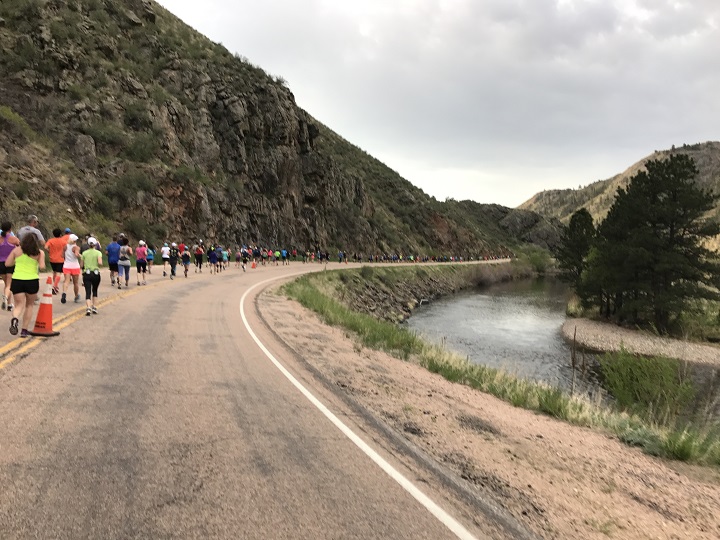
It was the moment I had a new appreciation for everyone I’d ever seen stop.
It was the moment I remembered again that sometimes it takes more courage to stop.
As a running coach it was also a moment for me to practice so many of the things I preach to you and to have an entirely new insight to what others have experienced.
There have been races I pushed through when I shouldn’t, races that simply felt awful like the super hot Chicago marathon and of course the days we all dream of where it clicks.
Today I want to help you move through all the emotions and figure out what is going to help you have a better race next time.
Why We Have a Bad Race Day?
Let’s be honest, even the most perfect training cycle doesn’t mean the half marathon, the marathon or even the 5K is going to go our way. It’s the nature of relying on a body that is fickle!
- Maybe the weather was bad. Too hot. Too cold. Too windy. Too rainy.
- Maybe you’ve been stressed and not sleeping well.
- Maybe you ate something that didn’t agree with your stomach too close to race day.
- Perhaps your IT Band flared up out of no where thanks to the slanted roads.
Just like bad runs, bad races happen to us all at some point.
Our goal is to bounce back as a stronger runner both physically and mentally from that day.
One of the first things I want to cover is when can you race again because this seems to often be our first thought if there wasn’t an injury.
How Long Between Marathons?
It’s easy to get home and check for the first race within a 2-hour radius just to redeem the horrible experience. However, there are some important factors to reflect upon before you bust out your wallet.
First, consider whether you truly had a bad race or whether you are being too hard on yourself.
Goals Too Big?
Did you set an overly ambitious PR or first time goal in a new distance? In that case, skip this section because you aren’t ready to race again ASAP.
It Just Wasn’t Your Day?
You went all out and it just didn’t work? If you’re going for a PR and went all out in the failed race, then allow eight to 12 weeks between races to rest. Foregoing recovery is a recipe for a repeat of your previous effort gone wrong.
Held Back Due to Injury?
If the reason for the terrible race was due to an injury, then you need to take the time to allow your body to heal and recover.
Going back out right away can just make the injury worse and last longer. Cross training may be the solution to keep you physically active until you can return to running.
As someone who has suffered from injuries, I know the pain, and this process has helped me cope mentally when I’ve been unable to run.
Didn’t go all out?
Then you have options to race again soon.
If there was an issue with the weather, a painful blister, or you felt ill and pulled back or decided to call it quits mid-race, consider it a practice run and capitalize on your fitness and find another race within the next 4-6 weeks.
Half marathoners can cut the time frame back to 3-4 weeks.
How to Do Back to Back Races?
Take it easy for a couple weeks, then taper again like you did for the previous effort.
Meaning give yourself a few days of recovery post race, then move on to easy runs for a couple of weeks.
That will leave you with just a few speed sessions and if you finished the full race distance, you’ll likely keep your long runs fairly short during this period as well (max 18 miles in most cases, but you might find a better result from a 16 mile run with some race pace miles).
If you’ve now taken a step back and realized your body may not be ready to go for a hard core race performance then, it’s time to really move on to the mental recovery phase of a bad race.
How to Analyze Your Race Day
Those with a running coach have the benefit of someone sitting down and doing a post race debrief. This immediately makes it feel like your race and all your training were valuable even when they didn’t go as planned.
When you don’t have that person by your side, you need to act like your own coach!
Starting by ensuring you’re following a smart post marathon recovery plan!!
#1 Allow Yourself to Wallow, but Not for Long
Feeling sad about your performance is perfectly ok. Be angry, frustrated, cry. You put a lot of time and dedication in to your training and you have the right to feel whatever it is that you need to feel.
Then, after a few days, it’s equally important to let it go and then start the process of moving on.
#2 Review What Went Well
Take a full look at the entire marathon training cycle and race day. A LOT of things went right and it’s really important to know what those pieces were.
Very few elite runners have a bad race and then start from scratch.
Instead, they make small tweaks. But you have to know the pieces that are working well before diving in to the potential things to change.
This is also really key to setting your mindset up correctly. Your training remains valuable and has moved you forward even if it wasn’t the race you hoped for. Which means you’re that much closer to your goal.
#3 Analyze What Went Wrong
A week or so after your race, once your emotions have settled and you can think more clearly, take the time dissect your race. Go over your and try to understand where the holes were.
Course Review
Was this a trail race, but you practiced mostly on road? Did you go from sea level to elevation? Had you been inside on the treadmill running flat because of weather and found yourself with some massive hills on the course?
A great reminder to not set our goals independent of the race course we’ve selected!
Nutrition Review
Were you plenty hydrated in the days before the race? Not just water, but electrolytes? Did you try new foods because of travel? Do you have a consistent long run meal that you need to travel with to races? Did you try a new gel on the course or forget to adjust your fueling because it’s a race and not a training run?
Sometimes, the reason for the failed attempt is controllable and carefully reviewing your training plan, diet, and race-day fueling strategy are the keys to future successful races.
Mental Review
If everything on paper looks right, then maybe you need to check your mental preparation.
Negative thoughts and self talk can be debilitating for runners. Long distance running is hard and requires mental strength just as much as physical strength, if not more so.
Kara Goucher talks about this very topic candidly in her book Strong, which includes exercises for creating mantras, positive self talk, and visualization strategies to become the best version of you.
Remember, your running career is about so much more than just one race.
You will have bad races. That is a fact.
Races are just one single day of a multi-month effort to reach your level of fitness. Think about the training as a whole, rather than just what happened on race day.
#4 Embrace Other Race Distances
Try starting over. Say you’ve had a series of bad marathon performances.
Go back down to the half marathon for the next few races, this isn’t a demotion. It’s an opportunity to capitalize on your huge endurance base to then push the pace on something shorter and give yourself some additional time during the week for strength training to create that injury proof body.
Go Super Local
Another fun way to boost your confidence is to sign up for a small town race with a small field. Maybe you’ll even place in your age group. Now there’s a boost to self esteem.
New Distances
Find a 4 miler or a 10 miler or another distance you’ve never run before and you’ve got an automatic PR. Because it’s new to you, this is a chance to let go of all expectations and pressure.
Just run to see what you can do at that distance.
#6 Stay Engaged in the Running Community
Another option might simply to be falling in love with the sport all over again…possibly for more reasons than the race clock. Here are a few ways to stay involved that might reignite a spark in you.
Listen I know that when injured we start to shy away from our run friends, but it doesn’t help. And I know post crappy Chicago Marathon I didn’t want to talk about it a ton…but again that doesn’t help.
You need to be around people who get it. They’ve been there!
Volunteer at a race.
Races are always in need of more volunteers and it’s an incredibly fun and rewarding way to give back to the community. Work at an aid station and cheer on runners as the pass through.
Or, if you feel like running, seek out opportunities to serve as a race day pacer and lead a group to their success. If you’re a trail runner, then ask about sweeping. With those two options, you get to be a part of the race atmosphere without having to put the pressure on your own performance.
Organize events.
Lead a group of friends to a new trail once per month. Pick out the distance and a place to eat afterward and make a fun day out of it.
Maybe your local running club hosts different events. Ask how you can become more involved and support your fellow teammates.
Read books about running.
I don’t know about you, but I always feel inspired to head out for a run after reading a good running book.
They each offer different perspectives, ideas, and strategies, so you just may come out with the spark you need to get back out there.
Support fellow Runners.
One great way to help support other runners is on Instagram. The community is truly wonderful and incredibly supportive.
There, you will find others who have experienced the same struggles as you have and you can be there to uplift those who are going through a rough patch.
Here are 10 inspirational running Instagram accounts to get you started.
Volunteer for Trail Maintenance.
All those beautiful trails you love to run on? They don’t just groom themselves.
Join a work party and give back to your favorite places by picking up trash, trimming overgrown plants, removing obstacles, and fixing washouts.
I’m not promising it’s easy or an overnight thing to let go of the big goal. But you will and then you’ll run again and you’ll love it again and you’ll try again.
A few more resources to help:
- Marathon Pace Strategy
- How to have your best half marathon
- Managing Race Day Nerves
- What to Eat Before the Marathon
- How Far Should You Run Before a Marathon
- What is a Shakeout Run
Other ways to connect with Amanda
Instagram Daily Fun: RunToTheFinish
Facebook Community Chatter: RunToTheFinish
Sign Up to Receive a Weekly Newsletter with Top Running Tips

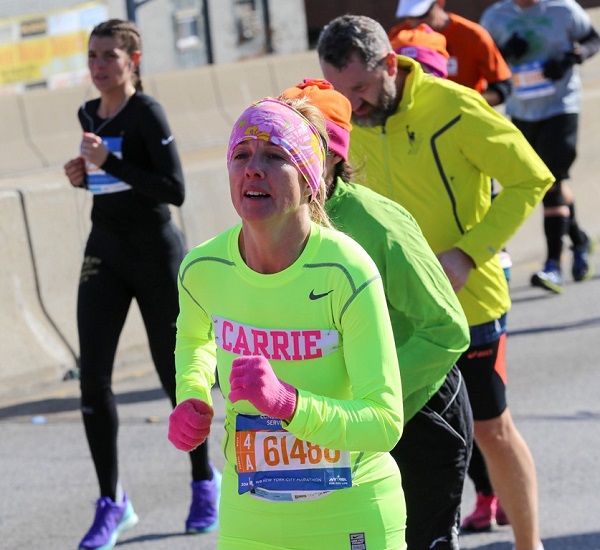
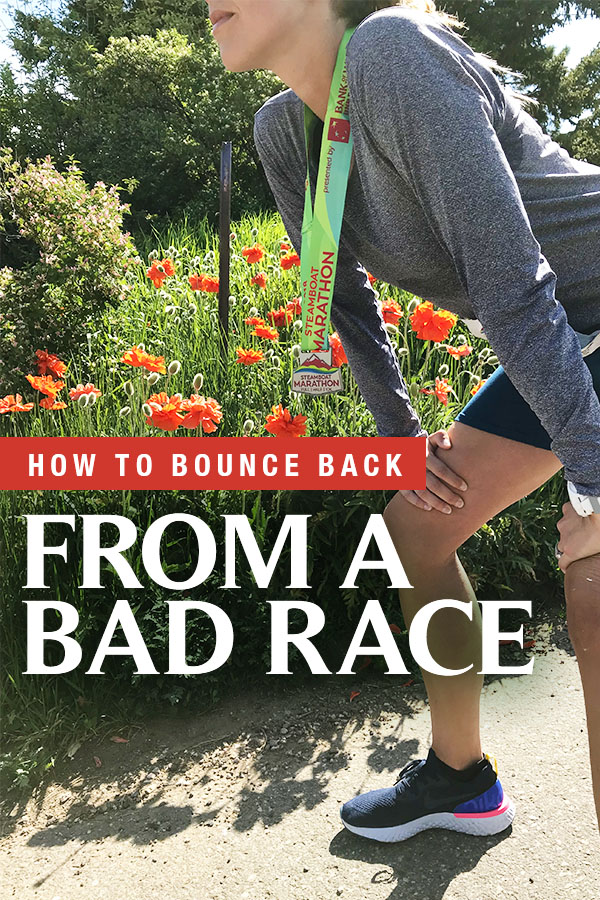
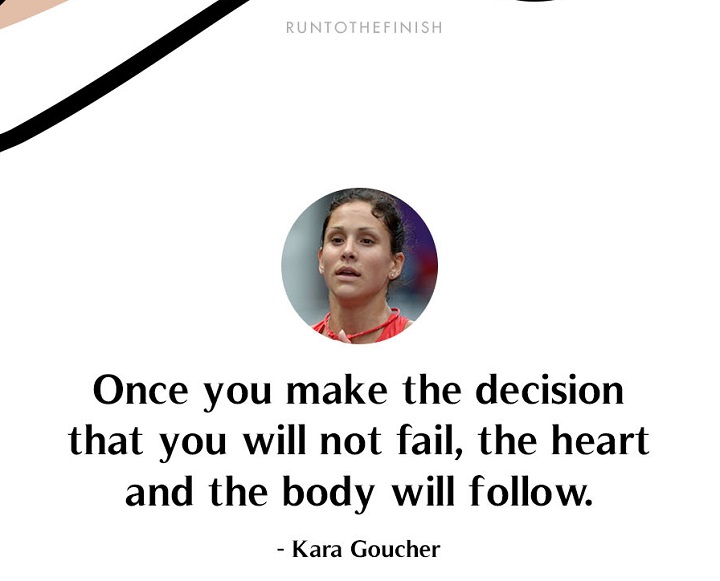
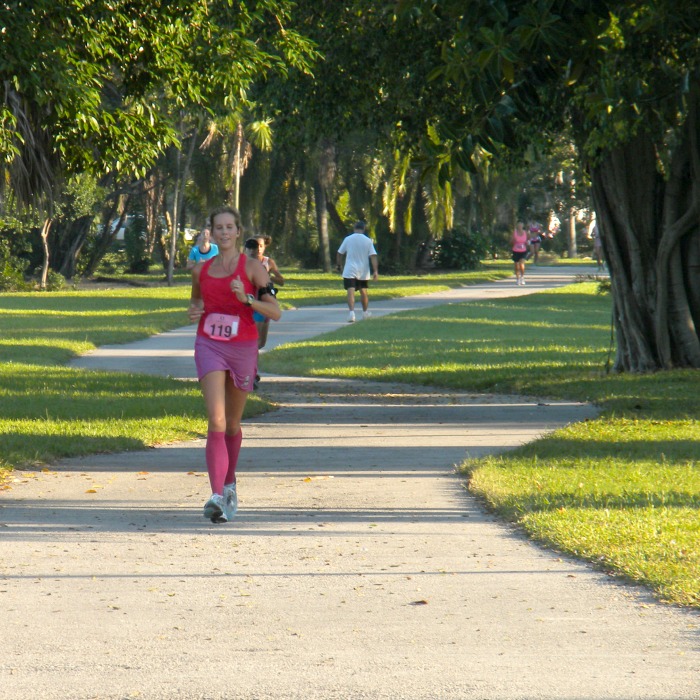


 11 Best Running and Muscle Recovery Tools
11 Best Running and Muscle Recovery Tools

Sarah
Great article! I think meditation can help with these problems, once you meditate you listen to your body, what causing the problems and what needs to be done. Let your mind and body be one and allow it to recover from excessive workout with a proper diet, enough sleep and daily stretching.
Shahista Mark
You are a story is motivational yo have covered all the situation bravely, I like your sportswomen spirit never loss by your self if we keep working and showing interest we can get many things.